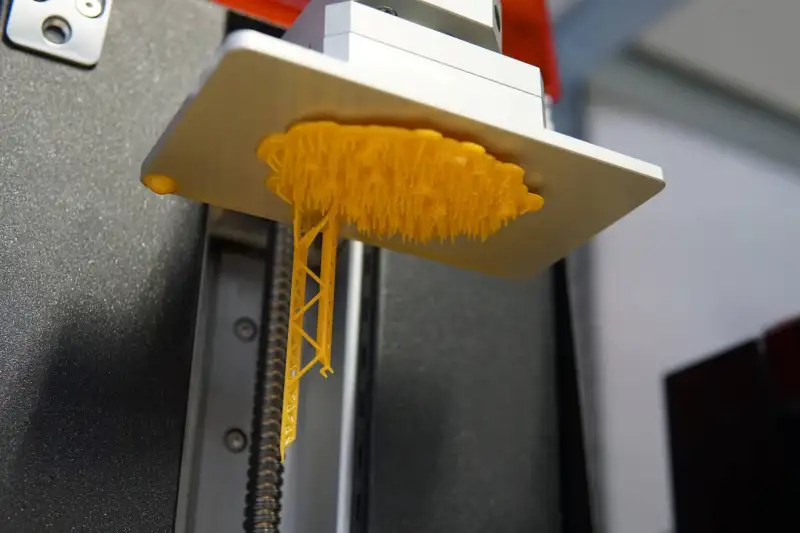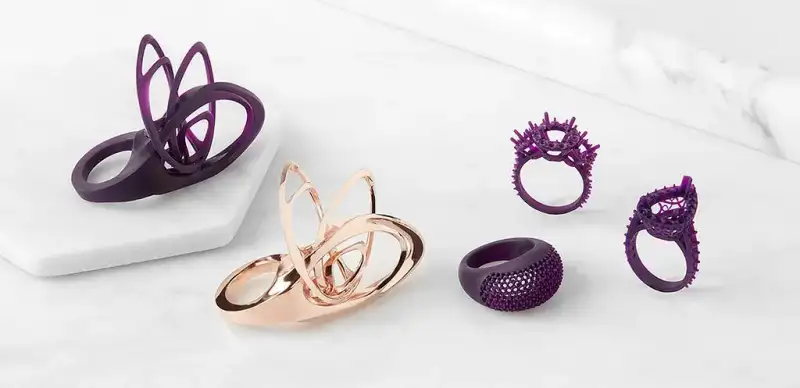Three investments lead the market for flawless jewelry casting: R&R Plasticast captures ultra-fine details (0.2mm), Certus excels with white gold/3D resins, and Gesswein G-Cast RP offers unmatched thermal stability (1,526°F). Always test with a Celtic knot sample first.
3D Jewelry Resins
The world of jewelry design is evolving at lightning speed, and 3D printing technology is fueling this transformation. At the forefront of this innovation is castable resin — a game-changing material that empowers designers to bring intricate visions to life with unmatched precision.
ProtoResins Castable Resins are a top choice for jewelry designers and manufacturers, offering unmatched precision and clean burnout properties for creating intricate, high-quality jewelry and prototypes. These resins are specially designed for 3D printing, making them ideal for the lost-wax casting process
Castable resins for 3D printers have revolutionized small-scale jewelry production, offering precision, versatility, and efficiency. These resins capture intricate details, burn out cleanly for flawless casting, and streamline the production process, reducing costs and turnaround times. With the freedom to create complex designs and compatibility with precious metals like gold and silver, castable resins are a game-changer for jewelers.
3D printing has transformed jewelry and prototyping, with castable resins for 3D printers leading the way. These resins burn out cleanly, making them ideal for casting. But how do you choose the right one? Test print quality, burnout performance, and printer compatibility to find the perfect resin for your needs. The right choice saves time, reduces waste, and ensures flawless project results.
Strong adhesion is key to successful resin 3D printing, especially for detailed jewelry molds or complex designs. Poor adhesion can lead to failed prints and wasted resin. In this blog, we explore common causes like unlevel build plates and incorrect exposure settings and share proven solutions to ensure flawless prints every time. Perfect your resin 3D printing with these expert tips.
Castable resins are the key to flawless 3D-printed jewelry molds for gold, silver, and platinum. Learn why they are the best resin for jewelry and how to achieve perfect prints every time. From printer settings to burnout tips, this guide helps you create professional-quality molds for custom rings, necklaces, and more.
Resin casting is a versatile process used in jewelry, dentistry, and prototyping, but challenges like surface imperfections, incomplete burnout, and mold cracks can arise. In this blog, we’ll explore common resin casting issues, their causes, and practical solutions to help you achieve flawless results every time. Perfect your craft and tackle challenges with confidence
Investment powders play a vital role in jewelry casting, ensuring precise and durable molds for intricate designs. This guide explores the top five brands, their unique features, and how tools like burnout kilns and casting machines enhance the process. Perfect for professionals and beginners aiming for flawless results.
Resin burnout is a crucial step in investment casting, especially with 3D-printed models like Proto Resins. This process removes resin to create a clean mold cavity, ready for metal or ceramic casting. By controlling temperature and timing, Proto Resins ensures minimal residue, smoother cavities, and precise results.










